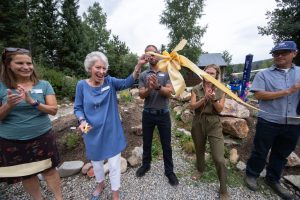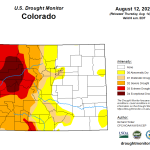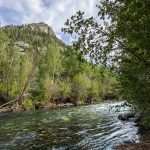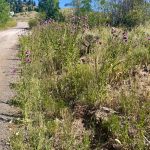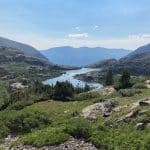Clearcutting near Blue River may be ‘shocking’ but officials say its necessary for 2 important reasons
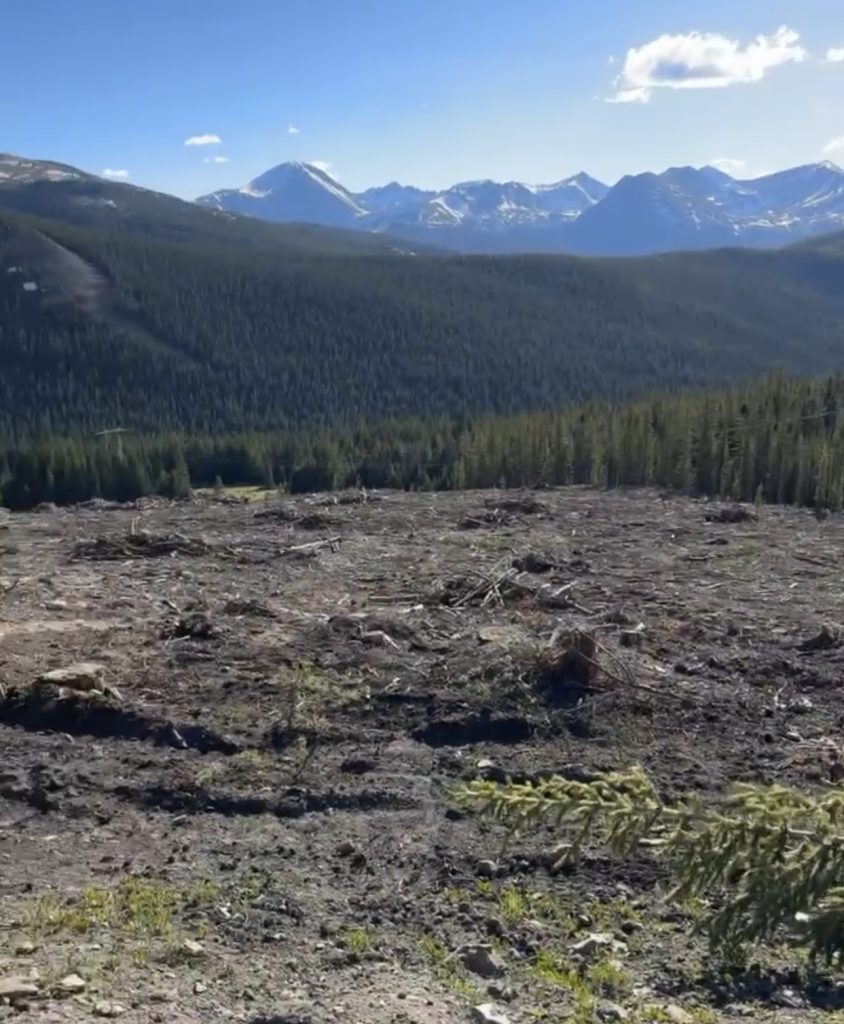
Andrew Maciejewski/Summit Daily News
More than a decade after it was approved, a forest health and wildfire fuels mitigation project near Breckenridge and Blue River is turning some heads.
The White River National Forest gave final approval to the Breckenridge Forest Health and Fuels Project in 2011, but the most recent phase of clearcutting to establish fuel breaks has raised some questions from residents.
“I’m hearing all about it,” Blue River Town Manager Michelle Eddy said. “It’s definitely a bit more visible. But it’s one of those things — we know it will all grow in. It all comes back.”
Over the past several months, residents have reached out several times with questions about the fuels project, Eddy said. The project has been phased over several years and one of the most recent phases, the Blue River West Hazardous Fuels Reduction Project, in particular has brought questions from residents, she said.
The Blue River West Hazardous Fuels Project is a 121-acre fuel break located near Blue River, just west of and paralleling Colorado Highway 9. The project went under contract in July 2022 and is expected to be completed by this October, according to the National Forest Service. It is part of the larger 5,700-acre Breckenridge Forest Health and Fuels Project being phased in over more than a decade.
“A lot of what we hear is shock,” Eddy said. “Not a lot of people have an opportunity to witness this type of mitigation up close in their community. It can be shocking.”
But Eddy said she has lived in regions with wildfire mitigation projects for years. Having experienced evacuations two times — and receiving many evacuation alerts other times — she said she understands the importance of these projects and uses them as an opportunity to educate residents.
“Blue River has been a bit of a leader, I’m proud to say, in forest fire mitigation and creating those defensible spaces,” Eddy said. “None of it is ever easy when you’re cutting down trees. People live in the mountains because they love the trees. But the long term benefits are good.”
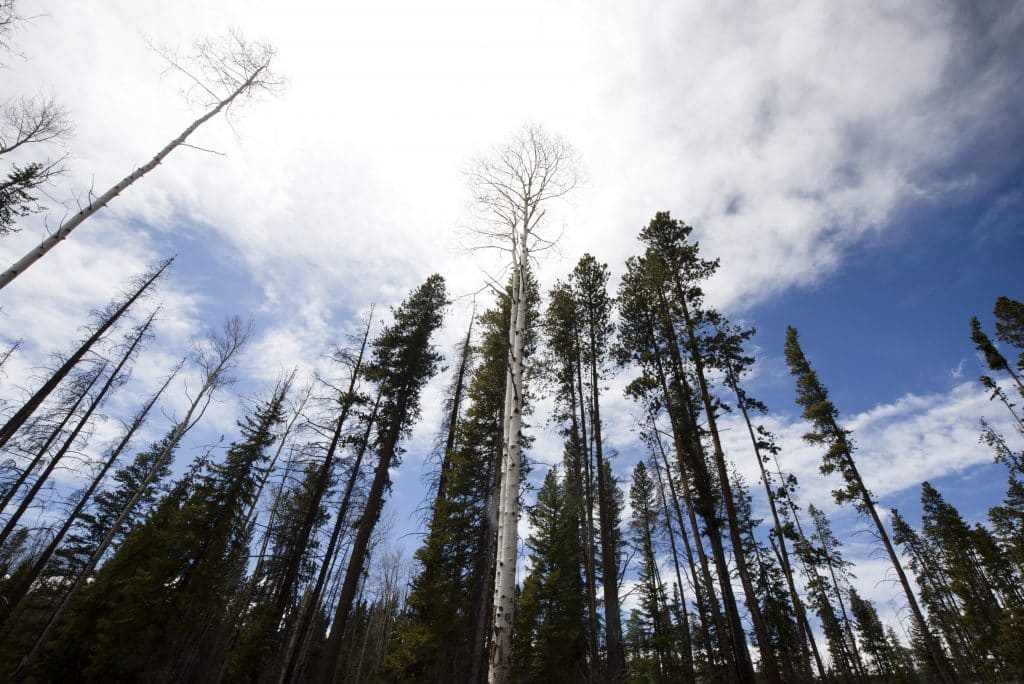
Lodgepole pines
The current lodgepole pine forest along Colorado Highway 9 near Blue River has existed since the last natural wildfire in the 1800s, and the trees are at the end of their natural life expectancy, according to the White River National Forest. Lodgepole pine forests throughout Summit County have high mortality rates due to the mountain pine beetle epidemic.
“Our lodgepole pine forests in Summit County have evolved with high-intensity fire,” White River National Forest fuels planner Katherine Gray explained. “They are used to stand-replacement fires coming in and killing off all the trees that then a new stand grows up. So with our clearcut in these lodgepole stands, we’re mimicking that.”
Lodgepole pine forests tend to grow in single-age stands, and their cones require heat from fire or sunlight to open up and release seeds, Gray said. Clearcutting replicates wildfires by allowing sunlight to reach the forest floor to spur new growth, she said.
Keeping up with the news is hard. Keep it simple with one weekly newsletter.
Sign up at SummitDaily.com/newsletter
Over the past few years, the Breckenridge Forest Health and Fuels Project has taken a phased approach, moving from the west side of Breckenridge south, including areas near Peak 7, near the Warriors Mark neighborhood and Blue River West, Gray said.
Fire breaks
Red, White & Blue Fire Protection District wildland division captain Matt Benedict explained that the heavy fuel loads created by dead and downed lodgepole pines are a known wildfire danger, especially when they are near neighborhoods.
The swaths of forest being addressed in the Breckenridge Forest Health and Fuels Project also lie in what is known as the wildland-urban interface, the zone of transition between forest lands and human infrastructure such as homes, businesses and major roadways.
In the Blue River West area, there are a lot of aspen and fur stands, but none of them have been cut, Benedict said. Removing lodgepole pines though has taken “a huge amount of fire danger out of the equation,” Benedict said.
“We can’t really stop fire in that environment,” Benedict said. “So we rely on these fuel breaks and fuel treatments to change fire behavior into something we can deal with.”
Fuel breaks like that along Colorado Highway 9 allow firefighters to have a “tactical advantage” while battling a wildfire, Benedict said. A 600-foot fuel break like the one created by the Blue River West Project will prevent a large crown fire that is hard for firefighters to battle, he said. It will also help prevent embers from spreading the fire further or to homes or businesses.
The intent of a fuel break is not to stop a fire, Benedict said, but to better control it to the point where it is possible to have fires on the landscape that don’t have major impacts on the local infrastructure.
“Having these fuel breaks allows us to more simply manage the risk,” Benedict said. “We can change the (fire) behavior to a point where we can deal with it without burning homes down, most likely, and protecting our infrastructure.”
Regeneration
White River National Forest Ranger Adam Bianchi explained that the replacement of old lodgepole pine stands with new growth creates more resilient forests while also reducing dead and downed material that presents a fire risk.
“Over time, we want to be able to create those stands that are more resilient, but at the same time create what the public is looking for: tree-covered mountains,” Bianchi said. “It’s a balance in the wildland-urban interface.”
While some of the fuel breaks may look barren when they are first cut, Bianchi said the Forest Service is required to monitor these areas in the years after a clearcut to ensure a minimum amount of new growth.
The Forest Service conducts surveys the year after, the third year after and the fifth year after a clearcut, Gray said, and if by the third year there is not a minimum of 150 lodgepole per acre, the Forest Service must make plans to replant.
Eddy said Summit County has plenty of examples of where forests have regrown healthier after clearcutting associated with fuel break projects. Just look at Swan Mountain, she said, where a similar project took place a few years back.
“It was shocking and people were up in arms,” Eddy said. “But you look at it now, and it’s a nice healthy forest area. That’s the goal.”

Support Local Journalism

Support Local Journalism
As a Summit Daily News reader, you make our work possible.
Summit Daily is embarking on a multiyear project to digitize its archives going back to 1989 and make them available to the public in partnership with the Colorado Historic Newspapers Collection. The full project is expected to cost about $165,000. All donations made in 2023 will go directly toward this project.
Every contribution, no matter the size, will make a difference.

